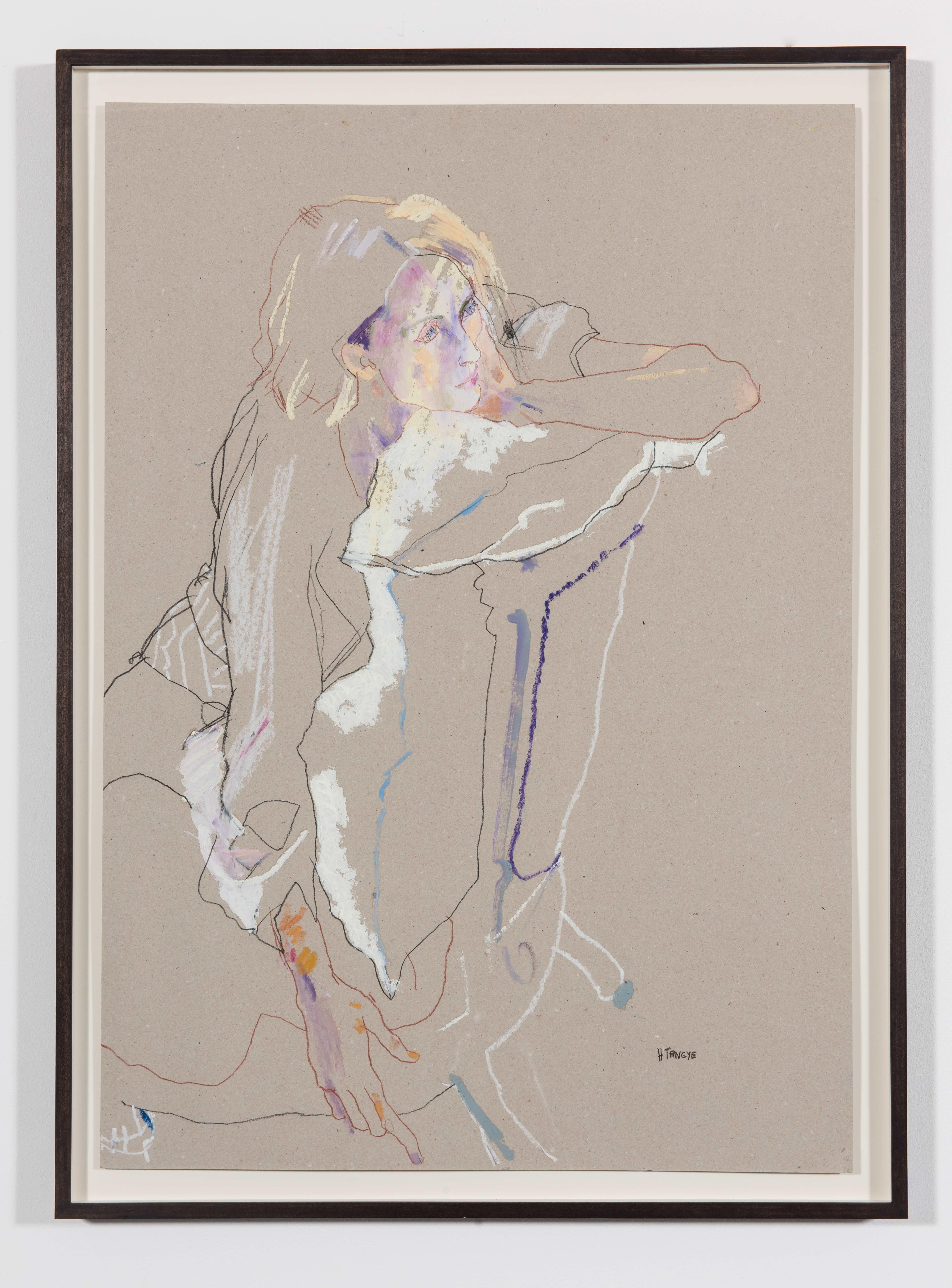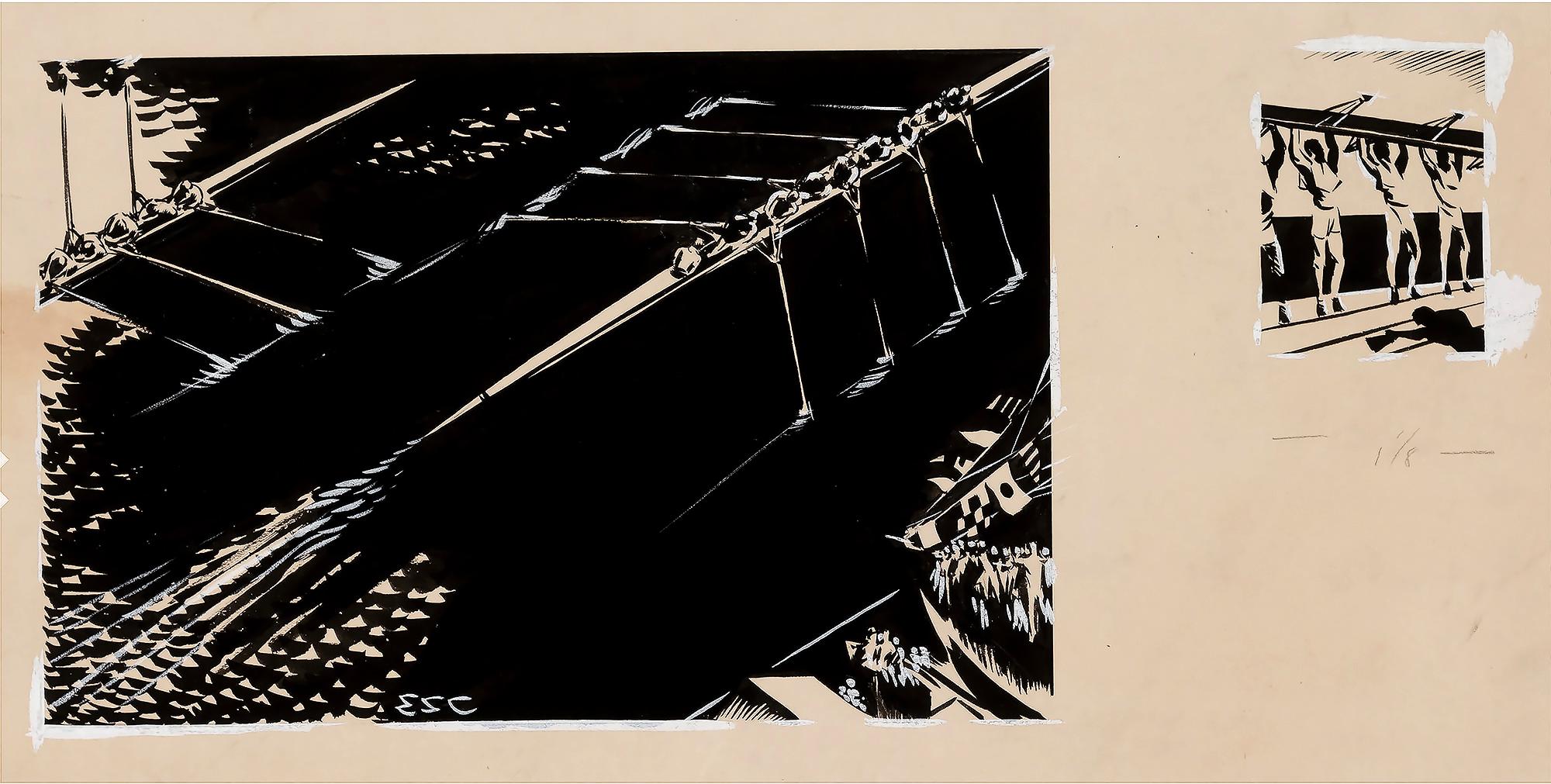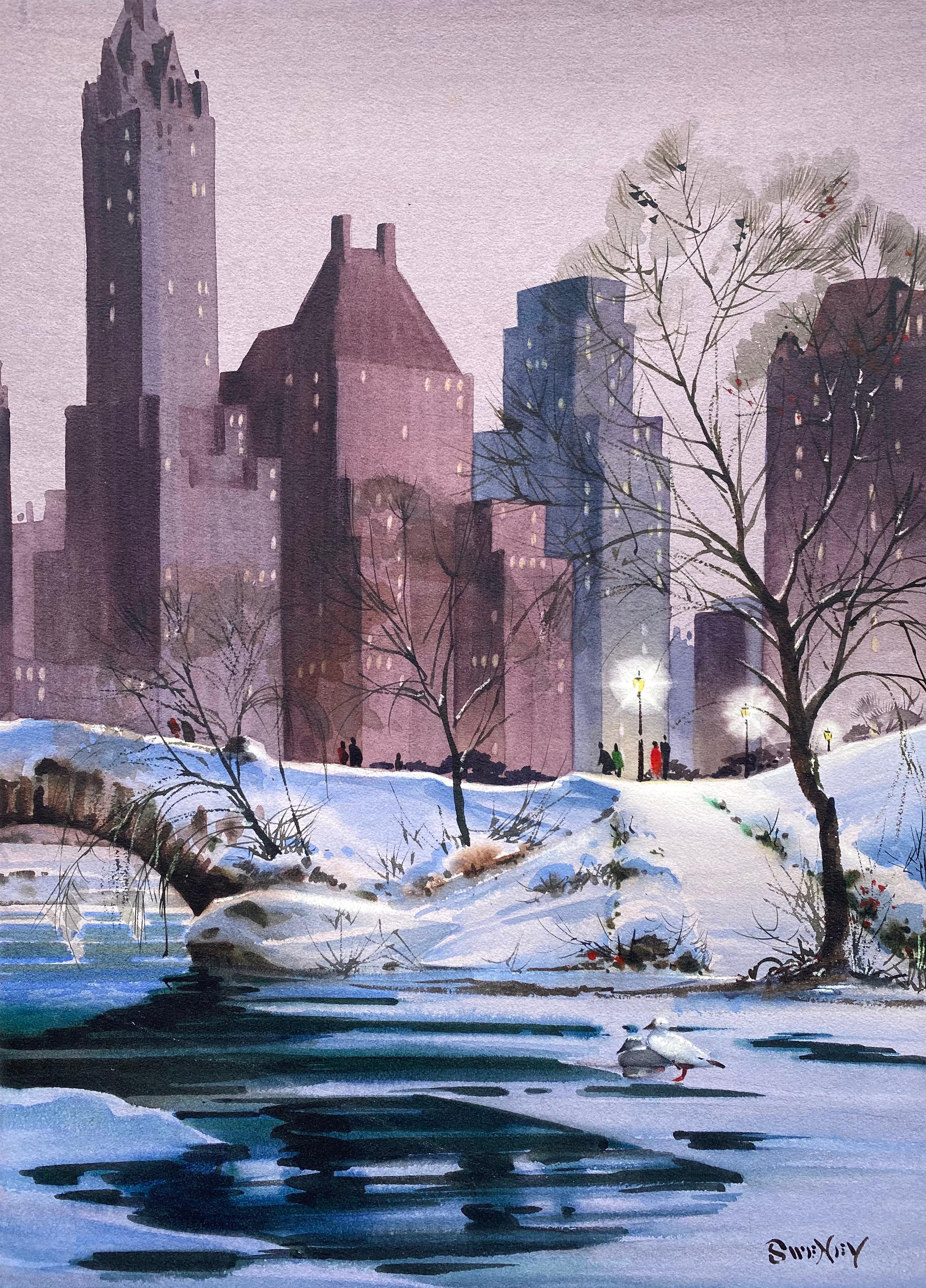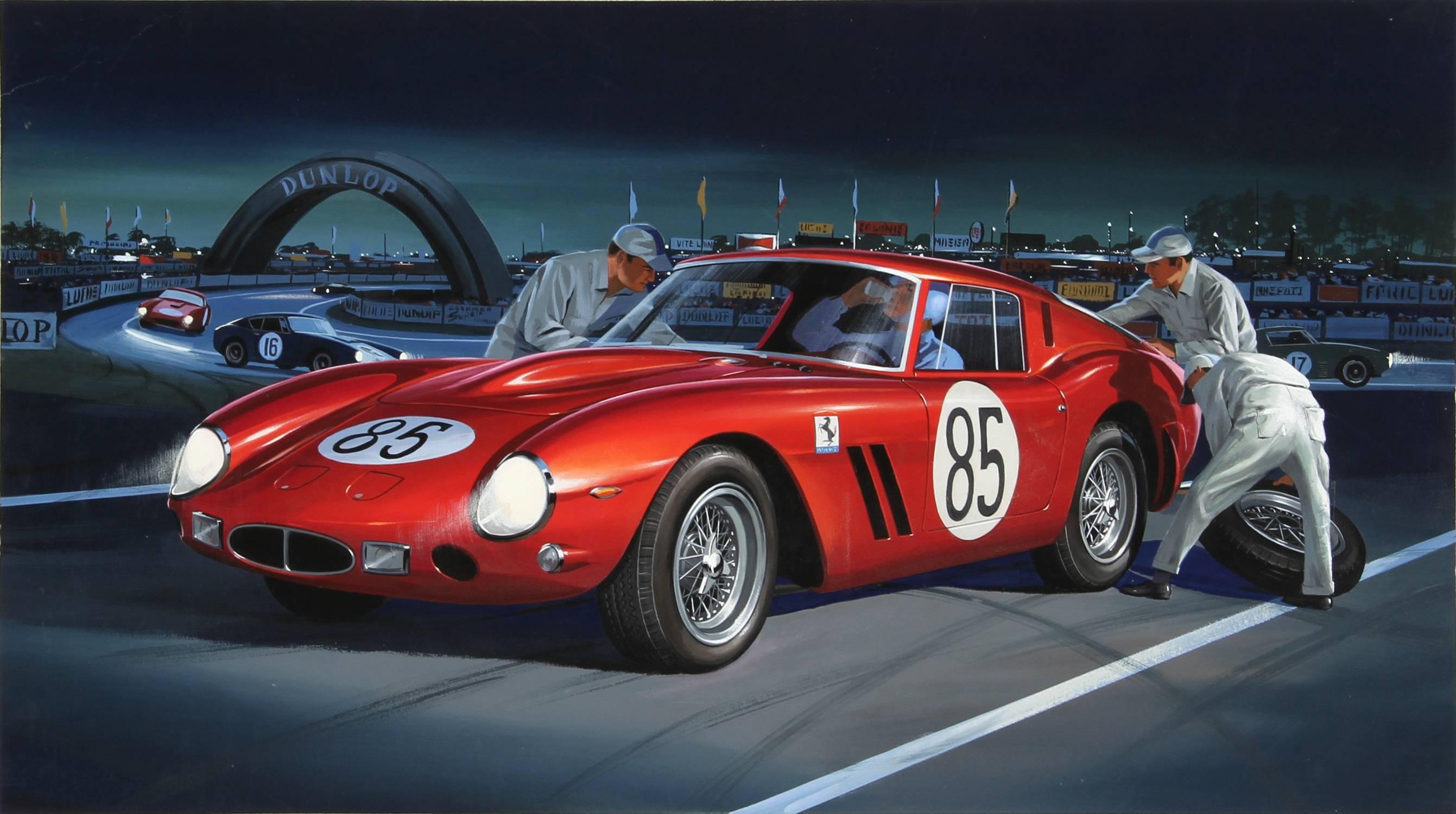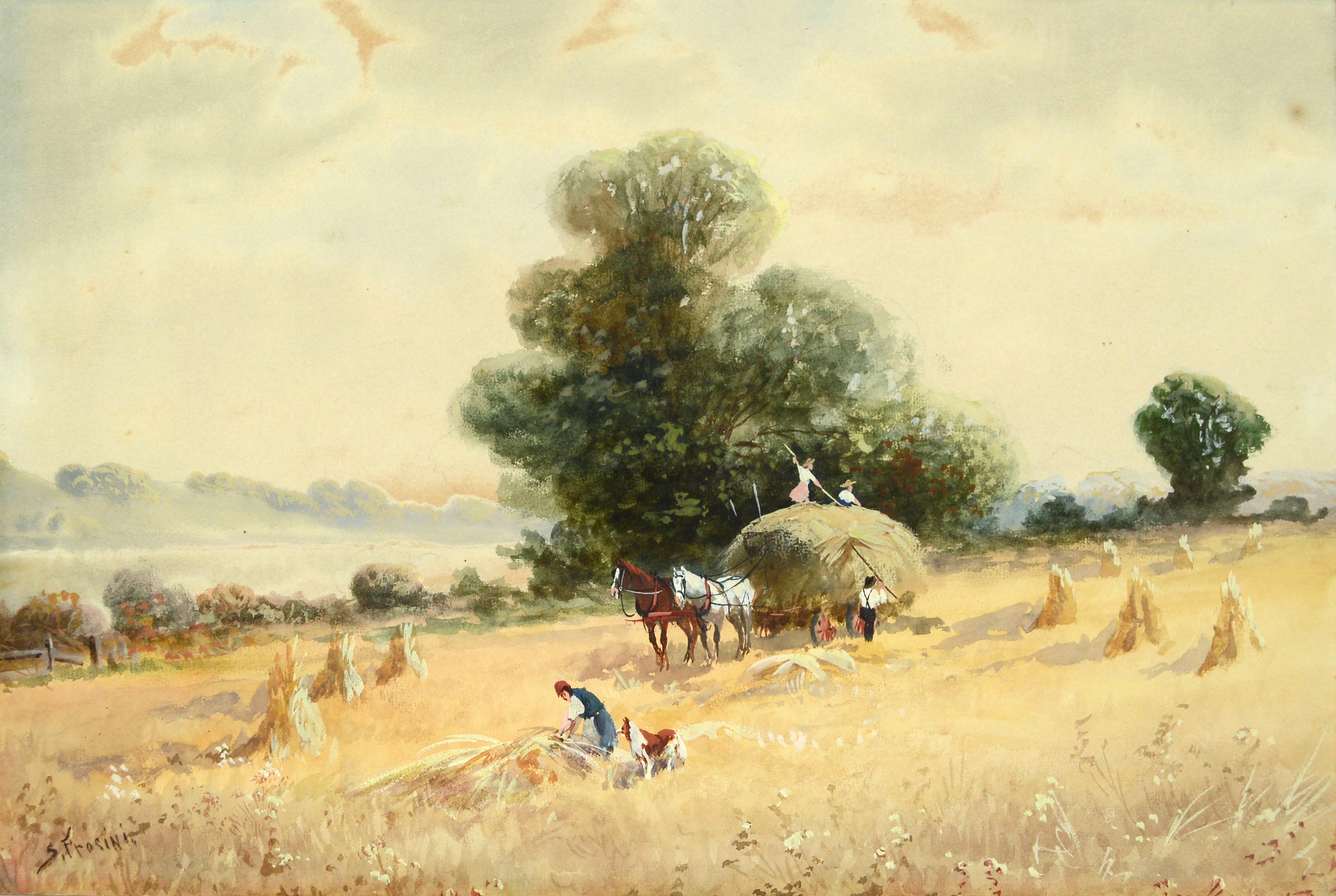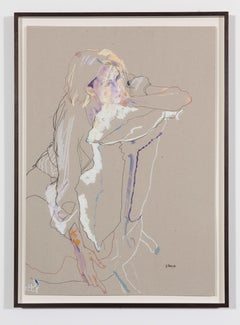
Woman with Brooch in Grey Tailleur.
View Similar Items
1 of 4
Carl Oscar August EricksonWoman with Brooch in Grey Tailleur.
About the Item
- Creator:Carl Oscar August Erickson (1891-1958, American)
- Dimensions:Height: 26 in (66.04 cm)Width: 19.5 in (49.53 cm)
- Medium:
- Period:
- Condition:HEIGHT: 26” image area: 12” WIDTH: 19 ½” image area: 16”.
- Gallery Location:Brooklyn, NY
- Reference Number:Seller: (code: Eric 11)1stDibs: LU213115840
You May Also Like
- Freya (Seated Backwards), Mixed media on grey boardBy Howard TangyeLocated in London, GBHoward Tangye (b.1948, Australia) has been an influential force in fashion for decades. Lecturing at London’s Central Saint Martins for 35 years, including 16 years as head of BA Wom...Category
2010s Contemporary Figurative Paintings
MaterialsOther Medium, Archival Paper, Handmade Paper, Pen, Felt Pen, Permanent M...
- Environmental Prognostication Coil Narrative "Homo Sapiens R.I.P."Located in Miami, FL"They paved paradise and put up a parking lot," Joni Mitchell said. - - Created in 1969, at the dawn of the American environmental movement, artist Richard Erdoes draws a sequential narrative in the form of a coil. From inception to destruction, it illustrates a list of things that humans are doing to destroy the world we live in. The work was commissioned for school-age humans and executed in a whimsically comic way. Yet the underlying narrative is sophisticated and foreshadows a world that could be on the brink of ecological disaster. Graphically and conceptually, this work exhibits an endless amount of creativity and Erdoes cartoony style is one to fall in love with. Signed lower right. Unframed 12.4 inches Width: 12.85 inches Height is the live area. Board is 16x22 inches. Richard Erdoes (Hungarian Erdős, German Erdös; July 7, 1912 – July 16, 2008) was an American artist, photographer, illustrator and author. Early life Erdoes was born in Frankfurt,to Maria Josefa Schrom on July 7, 1912. His father, Richárd Erdős Sr., was a Jewish Hungarian opera singer who had died a few weeks earlier in Budapest on June 9, 1912.After his birth, his mother lived with her sister, the Viennese actress Leopoldine ("Poldi") Sangora,He described himself as "equal parts Austrian, Hungarian and German, as well as equal parts Catholic, Protestant and Jew..."[4] Career He was a student at the Berlin Academy of Art in 1933, when Adolf Hitler came to power. He was involved in a small underground paper where he published anti-Hitler political cartoons which attracted the attention of the Nazi regime. He fled Germany with a price on his head. Back in Vienna, he continued his training at the Kunstgewerbeschule, now the University of Applied Arts, Vienna.[5] He also wrote and illustrated children's books and worked as a caricaturist for Tag and Stunde, anti-Nazi newspapers. After the Anschluss of Austria in 1938 he fled again, first to Paris, where he studied at the Academie de la Grande Chaumiere, and then London, England before journeying to the United States. He married his first wife, fellow artist Elsie Schulhof (d. xxxx) in London, shortly before their arrival in New York City. In New York City, Erdoes enjoyed a long career as a commercial artist, and was known for his highly detailed, whimsical drawings. He created illustrations for such magazines as Stage, Fortune, Pageant, Gourmet, Harper's Bazaar, Sports Illustrated, The New York Times, Time, National Geographic and Life Magazine, where he met his second wife, Jean Sternbergh (d. 1995) who was an art director there. The couple married in 1951 and had three children.[6] Erdoes also illustrated many children's books. An assignment for Life in 1967 took Erdoes to the Pine Ridge Indian Reservation for the first time, and marked the beginning of the work for which he would be best known. Erdoes was fascinated by Native American culture, outraged at the conditions on the reservation and deeply moved by the Civil Rights Movement that was raging at the time. He wrote histories, collections of Native American stories...Category
1960s American Realist Landscape Drawings and Watercolors
MaterialsInk, Gouache, Illustration Board
- Rowing Sculling Team Regatta, Life Magazine - African American IllustratorBy E. Simms CampbellLocated in Miami, FLE. Simms Campbell was the first African-American illustrator/ cartoonist published in nationally distributed, slick magazines, he created Esky, the familiar pop-eyed mascot of Esquire. This early work of 1930 was done on assignment for an interior page of Life Magazine. It features two Rowing teams engaged in spirited competition with cheering onlookers. This is a highly stylized black-and-white illustration and is masterfully executed. The work is composed of two illustrations, 6 x 9 inches and 2-3/4 x 2 inches respectively. It is initialed center bottow ESC. unframed Campbell left the University of Chicago and transferred to and received his degree from the Chicago Art Institute.[3] Professional career During a job as a railroad dining-car waiter, Campbell sometimes drew caricatures of the train passengers, and one of those, impressed by Campbell's talent, gave him a job in a St. Louis art studio, Triad Studios. He spent two years at Triad Studios before moving to New York City in 1929. A month afterward, he found work with the small advertising firm, Munig Studios, and began taking classes at the National Academy of Design.During this time, he contributed to various magazines, notably Life, & Judge Following the suggestion of cartoonist Russell Patterson to focus on good girl art, Campbell created his "Harem Girls", a series of watercolor cartoons that attracted attention in the first issue of Esquire, debuting in 1933. Campbell's artwork was in almost every issue of Esquire from 1933 to 1958 and he was the creator of its continuing mascot, the cartoon character in a silk top hat. He also contributed to The Chicagoan, Cosmopolitan, Ebony, The New Yorker, Playboy, Opportunity: A Journal of Negro Life, Pictorial Review, and Redbook. His commercial artwork for advertising included illustrations for Barbasol, Springmaid, and Hart Schaffner...Category
1930s Figurative Drawings and Watercolors
MaterialsGouache, Pencil, Ink, Illustration Board
- Church InteriorBy Ray QuigleyLocated in Buffalo, NYA modern illustration by American artist Ray Quigley depicting two men inside of a church.Category
1950s Realist Figurative Drawings and Watercolors
MaterialsIllustration Board, Gouache, Ink
- Tom Cawson (Sitting - Hand on Head), Mixed media on grey cardboardBy Howard TangyeLocated in London, GBHoward Tangye (b.1948, Australia) has been an influential force in fashion for decades. Lecturing at London’s Central Saint Martins for 35 years, including 16 years as head of BA Wom...Category
21st Century and Contemporary Contemporary Figurative Paintings
MaterialsOther Medium, Paint, Graphite, Color Pencil, Carbon Pencil, Pencil, Pen,...
- “Winter Evening”Located in Southampton, NYOriginal watercolor and gouache on archival Molvin arches paper by the well known American illustrator Fred Sweney. The scene depicts Central Park in New York City in a winter landscape with figures in conversation under an illuminated lamp post. Signed lower right. Titled verso in pencil with American Scene magazine #32 and page 30...Category
1960s American Realist Figurative Drawings and Watercolors
MaterialsWatercolor, Gouache, Illustration Board
$1,875 Sale Price27% Off
